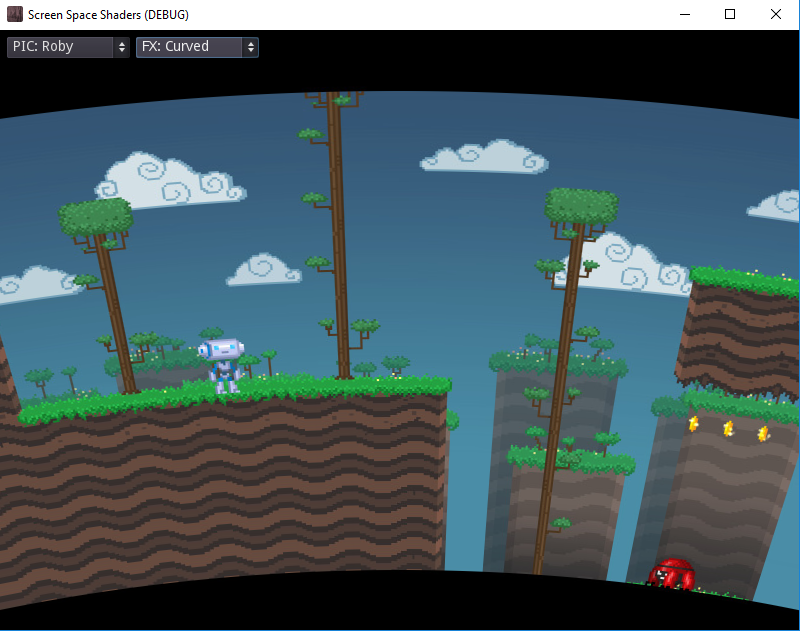-
-
Save t-karcher/4e78645021bc43a6ce377d9a18c2b1f5 to your computer and use it in GitHub Desktop.
| shader_type canvas_item; | |
| uniform sampler2D screen_texture : hint_screen_texture, filter_nearest; | |
| uniform float radius = 3.0; | |
| void fragment() { | |
| vec2 uv = SCREEN_UV; | |
| uv.y = 1.0 - uv.y; // seems like the origin changed in Godot 4. | |
| vec2 surface = vec2(0.5, 0.2); | |
| vec2 center = surface - vec2(0, radius); | |
| float base = length(uv - center); | |
| float height = base - radius; | |
| float xdiff = (uv.x - surface.x) / base * height; | |
| uv = clamp(vec2 (uv.x - xdiff, surface.y + height), vec2(0.0, 0.0), vec2(1.0, 1.0)); | |
| uv.y = 1.0 - uv.y; // flip back after all calculations | |
| COLOR.rgb = textureLod(screen_texture, uv, 0.0).rgb; | |
| } |
Very nice! It just what i need!
Thanks a lot for sharing this. It's weird - in Godot 4.0 this Shader bends the world but with the center on the top, so the opposite direction then your distortion in the screenshot. Any idea why?
Weird indeed. It seems like the origin of SCREEN_UV changed between Godot 3 and 4, but I couldn't find any hint regarding this. I added a quick fix now.
Thanks so much for the quick reply and the quick fix. Works! I was assuming the same but couldn't find any hint regarding the origin change too but I don't know much about shaders so I couldn't get it to work on my own. The solution is shockingly simple haha.
May I ask how your scene setup looks like? I currently use a ColorRect for the shader code in combination with a CanvasLayer parent. But this approach gives visible bending seems in the corners and it distorts everything in an uncomfortable way when the camera moves along the Y-axis. I am wondering - is this just the nature of the shader code or is it my setup? Looking at your screenshot it looks like you have a different approach.
Regarding the project setup / implementation: I never actually used this shader in an own project, but only wrote it as an answer for a request in some forum years ago. The screenshot you see above is taken from https://github.com/godotengine/godot-demo-projects/tree/master/2d/screen_space_shaders , where I just added the curved fragment shader in my local copy. So I cannot say much about practical implementation issues.
Regarding the origin change - let's ask an expert. :-) @Calinou: Do you know why I had to flip the Y-axis of SCREEN_UV for this shader to work in Godot 4? (The code was working perfectly fine without lines 8 and 15 in Godot 3.x)
@Calinou: Do you know why I had to flip the Y-axis of SCREEN_UV for this shader to work in Godot 4? (The code was working perfectly fine without lines 8 and 15 in Godot 3.x)
Godot 3.x used flipped viewports (it followed OpenGL convention), but this is no longer required in Godot 4 as we could break compatibility to make it the right way around.
Thanks for the confirmation/clarification! Since neither Maik nor myself were able to find this info, I just proposed to add it to the official migration tutorial: godotengine/godot-docs#7833
Before:

After:
